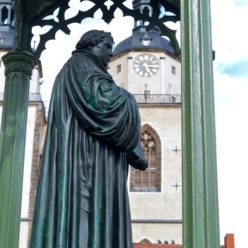S. Fenni1, D. Cavallo2, and N. Haddaoui1
1LPCHP, Faculty of Technology, University of Setif -1, Algeria.
2DCCI, University of Genova, Italy.
Bio-based blend nanocomposites of poly(L-lactic acid) (PLA) and poly(butylene succinate) (PBS) [1] with different concentration (from 0.1 wt% to 0.5 wt%) of Graphene Oxide nano-sheets (GOs) were prepared by melt blending. The resulting morphology is investigated with scanning and transmission electron microscopy (FE-SEM and TEM). FE-SEM of fracture surfaces revealed that the addition of GO to the bio-based PBS/PLA blend improves the adhesion between the two polymers, indicating that GOs nanosheets locate at the interface.[2] TEM analysis showed that the nanofillers are preferentially found in the PBS phase (minority component). The grapheme oxide nanosheets act as nucleting agents for both semicrystalline polymers. The nucleating effect of the added particle is compared to the one of own self-nuclei for each polymer, to define a convenient nucleating efficiency (NE) scale. A value of around 80% is determined for GO towards PBS, among the highest nucleating efficiencies ever reported for this polymer. On the other hand, the efficiency in nucleating PLA is equal to a modest 15%, due to the uneven distribution of the filler in the two polymers. A close relationship between the nanocompostie complex morphology and crystallization behavior of the two different polymers is thus established.
References
[1] Wang, R. et al. Polym. Eng & Scie. 49:1, 26–33. 2009. (link)
[2] Cao, Y. et al. ACS Nano. 5:7, 5920-5927. 2011. (link)
